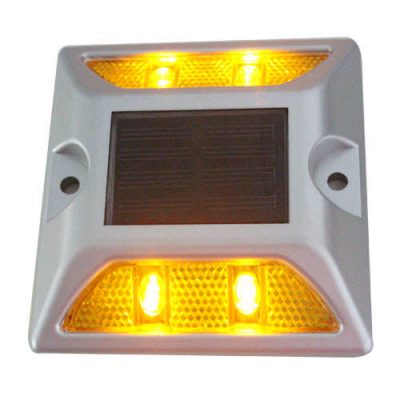Road studs, also known as cat’s eyes or retroreflective pavement markers, serve several important purposes on roadways to enhance safety, navigation, and overall road functionality:
- Enhancing Visibility: Road studs are equipped with retroreflective materials that reflect light from vehicle headlights back towards the driver’s eyes. This makes the road layout, lane markings, and other important features on the road surface highly visible, especially during nighttime and adverse weather conditions such as rain, fog, or snow.
- Lane Delineation: Road studs are commonly used to mark lanes on the road. They provide clear and continuous lane delineation, helping drivers stay in their designated lanes and maintain proper lane discipline. This reduces the risk of lane-change accidents and improves traffic flow.
- Centerline and Edge Marking: Road studs are placed along the centerline of two-lane roads to guide drivers and prevent head-on collisions. They are also positioned along the edges of the road to help drivers maintain their position within the lane and avoid drifting off the road.
- Curve Warning: Specialized road studs with amber or red reflectors may be used to indicate upcoming curves, sharp bends, or hazardous sections of the road. This early warning system allows drivers to adjust their speed and approach curves safely.
- Intersection and Crosswalk Marking: Road studs are used to mark intersections, stop lines, pedestrian crosswalks, and the direction of travel at road junctions. They assist in regulating traffic flow and ensuring safe interaction between vehicles and pedestrians.
- Exit and Entry Ramps: On highways and expressways, road studs with different colors are often used to guide drivers in selecting the correct exit or entry ramp. This helps prevent confusion and lane changes at the last moment, reducing the risk of accidents.
- Pedestrian Safety: Road studs can be used to mark pedestrian crossings and walkways, making them highly visible to both drivers and pedestrians. This enhances pedestrian safety, especially in areas with heavy foot traffic.
- Roundabout Guidance: Road studs are employed in roundabouts to mark the circulatory roadway and exit points, assisting drivers in navigating these traffic circles safely.
- Traffic Island and Median Delineation: Road studs help delineate traffic islands and medians, aiding drivers in understanding the road layout and ensuring proper lane discipline.
- Temporary Traffic Control: Road studs can be utilized for temporary traffic control during construction or roadwork to guide drivers safely through detours, lane shifts, and other temporary alterations to the road layout.
Overall, road studs play a critical role in road safety and navigation by improving visibility, guiding drivers, and reducing the risk of accidents on roadways, particularly during challenging conditions.







